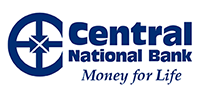
Estate plans are only for rich people. – MYTH.
This is one of many misconceptions people have about estate planning. Estate planning is not just about wealth, it is about relationships. It is important to understand how an estate plan can work to settle your affairs after your passing or in the event you become incapacitated.
Estate plans are not one size fits all – they come in all kinds of shapes and sizes depending on your goals, family dynamic and the types of assets your own. The key word to focus on is PLANNING. How much planning do you want to invest in the disposition of your estate?
NO PLAN
The most basic plan is “no plan”. This means you died without a will (intestate). In this situation the state has a plan for you. Every state is different, so verify the default succession plan for the state you reside in. Currently, for Kansas, if you die without a will, the distribution of assets will be as follows:

Dying without a will may create unexpected complications for surviving family members such as unintended distributions to minor children, inadvertently disinheriting family members and confusion as to how survivors should dispose of your personal property. A Last Will & Testament would allow you to direct assets in your estate to go to specific individuals. The option of dying without a will becomes even more complicated if you are co-habituating with a partner and not married or have minor children.
“POOR MAN’S WILL”
The next level for estate planning is to assign beneficiary designations to your accounts. Retirement accounts already require a beneficiary designation, and you also have the option to add a Pay on Death (POD) or Transfer on Death (TOD) designations to bank accounts and investment accounts respectively. This type of planning is straightforward and simple, but it has its drawbacks. First, to work effectively, all parties need to die in the “right” order. If beneficiaries pre-decease the account owner, designations will need to be reviewed and updated. Second, this type of planning does not account for personal property.
BASIC PLAN
The basic estate plan that would fit most people’s needs include the following documents: Last Will and Testament, Healthcare Power of Attorney, Financial Power of Attorney, and a Living Will. These documents would allow you to designate beneficiaries, make specific gifts to individuals and/or charities (i.e. I would like my granddaughter to have my wedding ring.), appoint an individual to handle your affairs while you are still living, and give loved ones direction should you become incapacitated.
ESSENTIAL PLAN
The essential plan includes everything in the basic plan with the addition of a Revocable Living Trust. The trust document is the instrument that will direct your wishes should you become incapacitated or pass away. It is important to note that assets in the trust’s name do not go through probate and are managed by the trustee. A trust is an excellent tool for blended families, the support of beneficiaries with special needs, and the management or distribution of complex assets such as farmland and other real property. Where a will would distribute a specific asset outright to your beneficiaries, a trust would allow you the flexibility to make distributions periodically or at a specific time even after you pass away. This works well if you would like to gift to the children or grandchildren but want to wait until the beneficiary has reached a specific age.
BENEFITS
Within the financial services industry we are seeing an increase in elder abuse cases as well as issues with diminished capacity. Estate planning is further complicated by blended families, second and third marriages, and his/hers/their children family dynamics. To safeguard your assets and insure the people or charities that mean the most to you are cared for after you’re gone requires planning and consideration.
If you opt to have a formal estate plan created, I encourage you meet with an attorney who specializes in estate planning to discuss your options. Once you have a plan in place be sure to review it regularly and anytime there is a major life event – death, birth, marriage, divorce, sale/purchase of major property or business.
Tax and Legal Advice Disclaimer: Central National Bank and its affiliates do not provide tax or legal advice. This material has been prepared for informational purposes only, and is not intended to provide, and should not be relied on for, tax or legal advice. You should consult your own tax, legal and accounting advisors before engaging in any transaction.
Please Note
Securities:
- are NOT Deposits
- are NOT FDIC Insured
- are NOT Insured by any Government Agency
- are NOT Guaranteed by the Bank
- are Subject to Risk
- are Subject to Possible Loss of Principal
Certified Financial Planner Board of Standards Inc. owns the certification marks CFP®, CERTIFIED FINANCIAL PLANNER™, CFP® (with plaque design) and CFP® (with flame design) in the U.S., which it awards to individuals who successfully complete CFP Board’s initial and ongoing certification requirements.
This does not include federal insurance programs such as Federal Crop Insurance.
